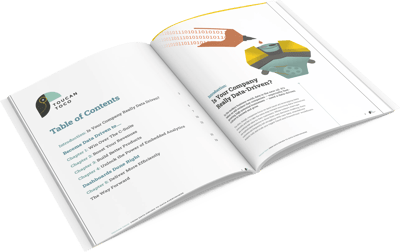Agile Analytics - What is it ?
The Agile Analytics method, or agile analytics, is an approach to data analysis inspired by the agile software development method invented in 2001.
Initially created for software development projects, this method consists of setting short-term objectives rather than planning an entire project upstream. Each project is therefore broken down into successive sub-projects.
It is based on four fundamental pillars: teamwork, collaboration with the client, application and change acceptance. Nothing is set in stone, and sub-projects are subject to change over time until the final objective is achieved.
Applied to data analysis, the agile method is based on adaptability and collaboration, through flexible and iterative analysis that can be adapted to specific needs.
Thus, this "agile" approach is opposed to a more traditional rigid method such as the "waterfall" approach. The iterative cycle allows data to be analyzed on multiple points in a rapid and experimental manner, to discover new interpretations or to obtain surprising answers to queries.
Rather than proving a hypothesis, agile analysis allows you to find value in the data. It is therefore suitable for analyzing data that is not necessarily clean and organized, and avoids bias. It is therefore better suited to a constantly changing environment.
However, to reveal its full potential, agile analysis should preferably be used on data that is sufficiently granular to reveal unexpected findings. It also works best when deployed in a collaborative process.
Nor should agile analytics be seen as a complete replacement for more traditional practices. Sometimes it is still relevant to put in place specifications and implementation guides for new projects, but these documents can be updated over time.
Reports, data visualizations, dashboards and new functionality will need to be developed on an ongoing basis to optimize existing processes and create new ones. This is what allows for the adaptability inherent in the agile approach.
Agile analytics is notably used in the finance industry to find evidence of crime or illegal activity. The open analysis of data allows to identify connections between different suspicious activities. In the manufacturing sector, this method can be used to discover new ways to optimize processes.



